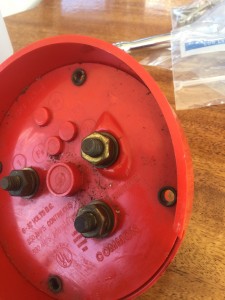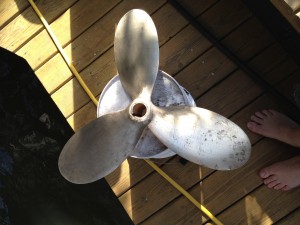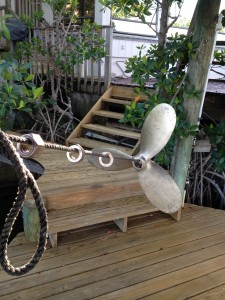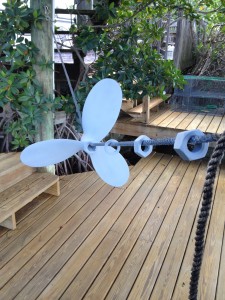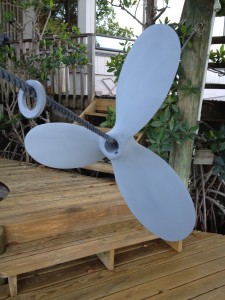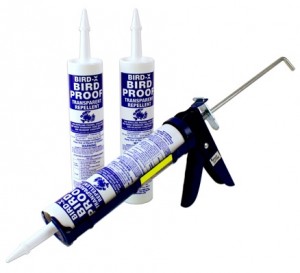Well, it’s been a pretty eventful month, or so. We took advantage of our time in Oriental to upgrade our battery banks wiring and a few other things. Some of our battery bank cables were undersized, not properly crimped, our banks lacked a main fuse and our smaller bank had been wired in a slightly less than a fully efficient manner. We also installed two Bogart/Trimetric (Model TM-2030-RV) battery bank monitors which have made keeping tabs on our charging and battery bank status much, much easier. That’s one of the things about buying an older boat, she’s been through a few owners and while some were meticulous, some weren’t, and if a system is working one owner may never have had the need to address or investigate the status of the individual components that may not have been exactly “up to snuff” when installed by the prior owner, owners or contractors or the standards have changed over time in favor of better, safer or more efficient methods..
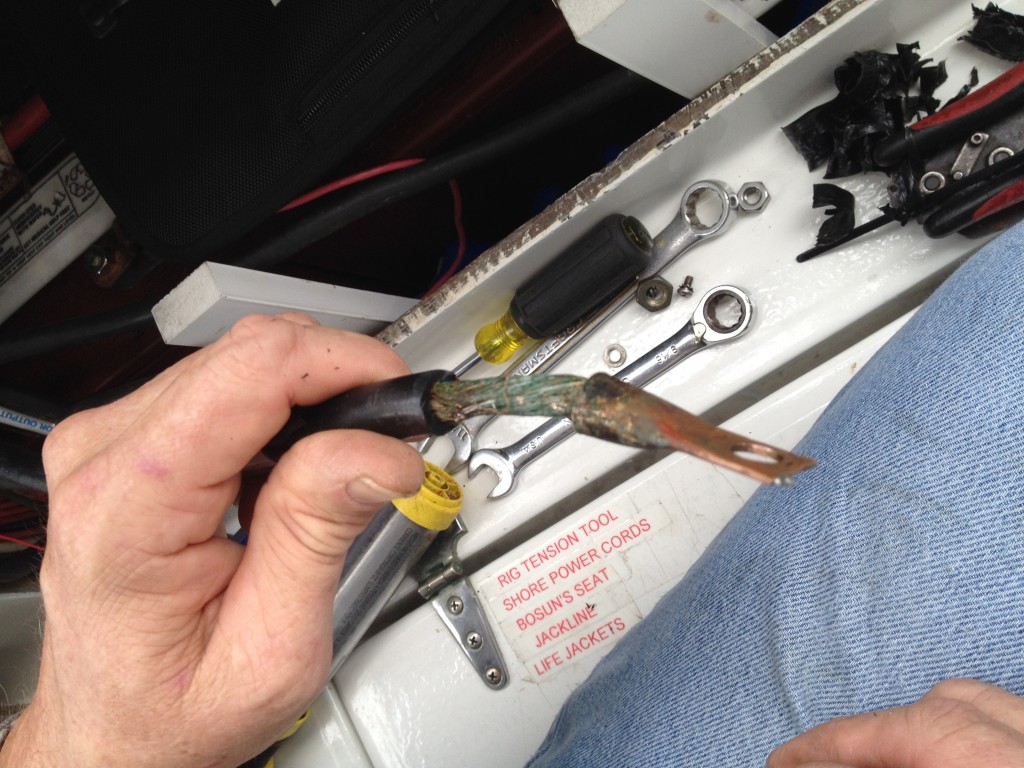 Now that’s a pretty bad crimping job…it was covered by electrical tape……
Now that’s a pretty bad crimping job…it was covered by electrical tape……
We also added a Blue Seas electrical master panel to our AC shore power system that has a 30 amp, dual pole, ELCI (Electrical Leak Circuit Interrupter, if your boat happens to develop a leak of AC current into the water while plugged into shore power, which is extraordinarily dangerous, it shuts off the AC power). The breaker itself has a sensor in it that measures the amount of electricity flowing out and compares it to what returns and if there is a slight difference it trips the breaker. We discovered once we powered up this new panel that our water heater was wired incorrectly since the new breaker tripped as soon as we energized the circuit. As it turns out, the wiring for the water heater was a commercial type of wiring (IEEE marine cable, intended for use on Navy and commercial vessels….with this type of wire red is ground, black is hot and white is neutral, so our water heater was basically wired backwards, which still allowed current to flow through the element but the new more sensitive breakers caught the difference in the polarity/voltage returning and shut it down) since the color coding was different it must have confused whoever originally wired it. It took an extra fifteen minutes to correct this and then things operated perfectly. We also added a safety cover to the interior of our shore power plug connection which was missing.
I’d like to extend our gratitude to Jim Bonnett, the owner of Wavetop Technologies in New Bern, NC, for his assistance with the battery and AC upgrades. He’s been having some website issues but if you need any work he’s an ABYC Master Technician in a lot of fields (maybe all of them, I haven’t counted yet) . His current website is www.wavetop.com but he may migrate to a new one if his current issues prove to be linked to that web address. Jim is so educated about AC and DC systems and wiring it can make you dizzy just listening to him talk….he’s a very smart guy. You can also reach him at Jim@wavetop.com
We also painted our newly re-plumbed and re-opened forward shower stall…..
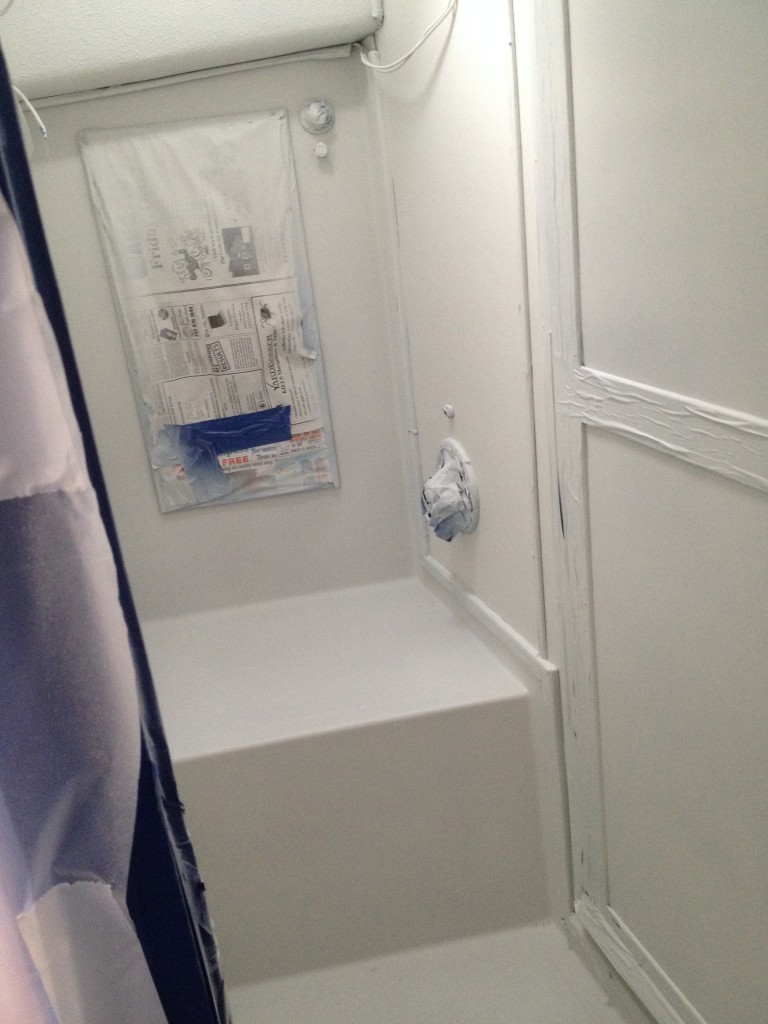
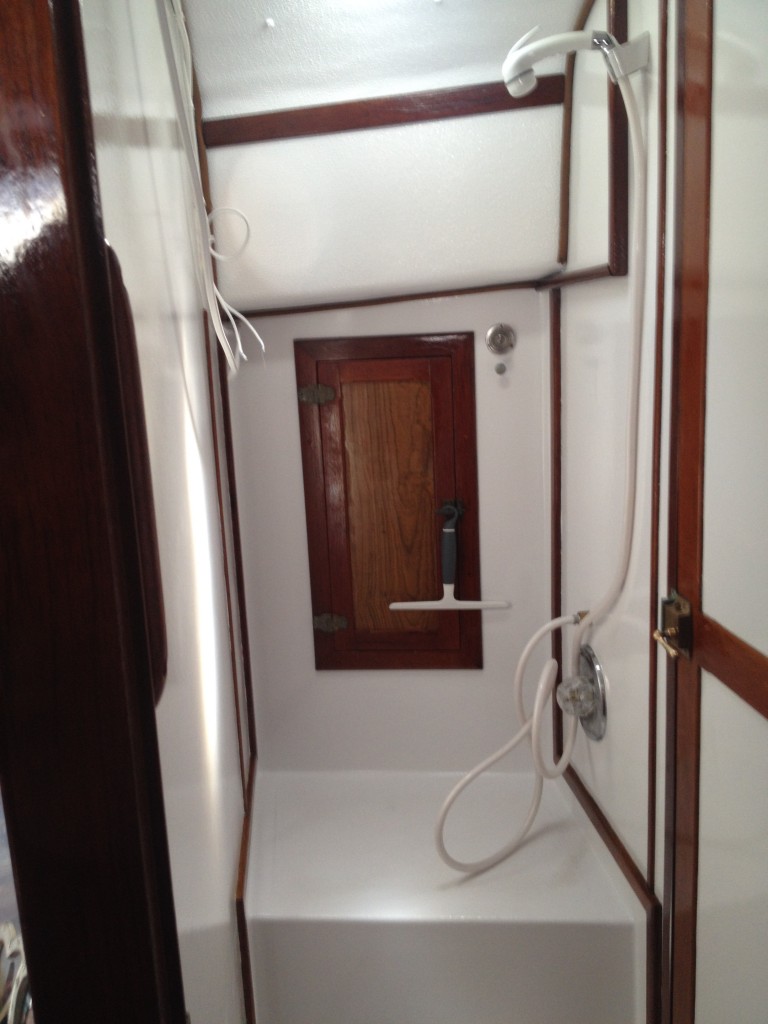
I also painted new length markers on our anchor chain and replaced the shackles…..
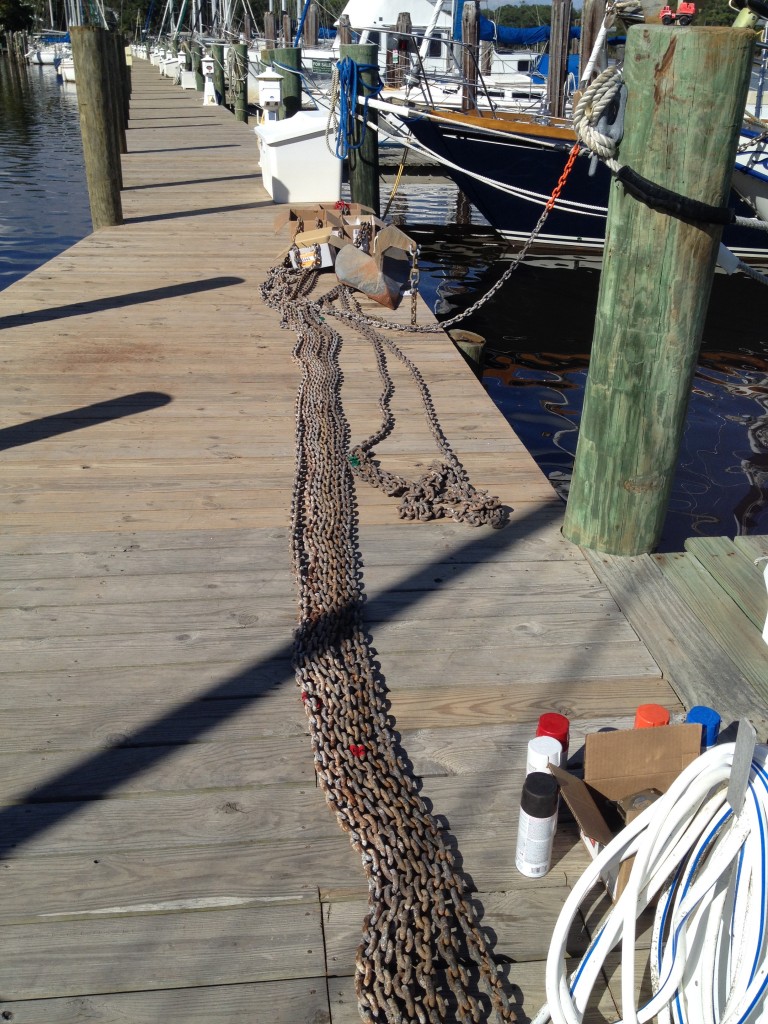
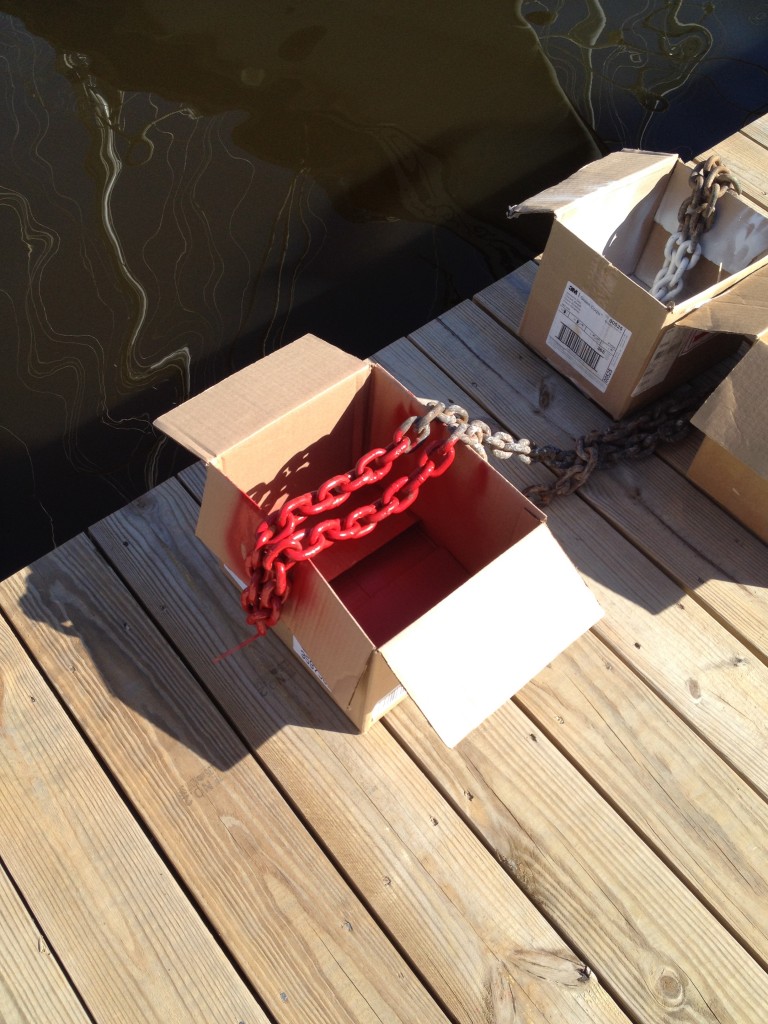
I decided to go with Red at 50′, white at 100′, Blue at 150′ Black at 200′ and Orange at 250 just before the chain runs out and the rope rode begins.
We’d also like to give some well deserved praise to Pete Waterson of Seacoast Marine Electronics (http://seacoastmarineelectronics.com/) in Oriental, NC. Pete is the owner and installed our new NMEA 2000 backbone wiring, AIS transceiver, a new Raymarine I70 display, a masthead anemometer and wind direction sensor which is now all tied into our Garmin 741XS chartplotter at the helm. Pete also installed a new VHF antenna and Windex while he was at the masthead. Pete also helped me (or maybe I helped him) rewire our binnacle wiring and add a power/ground bus to clean up the connections there and eliminate some voltage loss and an issue with a weak ground. If you find yourself in Oriental or nearby and need any electronics or assistance be sure to look Pete up. He’s a great guy and his office staff (Jill, his wife and Betsy) are super friendly and helpful.
We were later joined by our good friend, Mike, in Oriental, just in time for the Ol’ Front Porch Music Festival on October 17. It was a great day, beautiful weather and lots of good music and food. Apparently, this was a tradition among the old time farmers in the area and on Saturday nights they would come into town and play music on a variety of front porches around town. Time and progress being what they are, this tradition was slowly lost and has been revived during this once a year festival. The Carmona Brothers and Laurelyn Dossett were the final performers of the day and if you’ve never heard either of these, I recommend looking them up online.
 Aaron Carmona and his traveling pooch (photo credit to Towne Dock)
Aaron Carmona and his traveling pooch (photo credit to Towne Dock)
We waited for some weather to pass and departed Oriental on October 20th around 8:00am. It was a nice trip. We arrived around 11:45am in Morehead City, NC since we wanted to make the first day short and non stressful…then Murphy reared his ugly head. As we approached Portside Marina in Morehead City a large tugboat that was bow in at the state port abruptly moved astern into our path. I was forced to throw Kitty Hawk into full reverse to avoid colliding with the tug. As the dust settled from that encounter we again proceeded toward the Portside Marina face dock. There was suddenly something very wrong. It took about five seconds for me to realize that for some reason we were no longer getting any forward propulsion. I immediately shifted to neutral, then tried reverse and got the same result….no response …I could hear the transmission shifting and assumed we had lost our throttle cable. After advising Mike and Kim that we were going to be coming into the dock at about 3 knots SOG (speed over ground) I called the marina hands on the dock on our VHF radio to let them know. We managed to dock pretty easily, all things considered, despite coming in at what felt like warp speed. Once we got settled, we diagnosed the problem and it was, in fact, the throttle cable that had broken just below the shift lever. I spoke to the owner of Portside Marina, Denard, who is a super nice gentleman. He not only found the part for us, but let his brother in law, who works at the Marina, drive me over to get it. The cable was replaced two hours and $27 later…..Portside Marina is the only place I’ve ever walked into and been immediately invited to partake in the employee lunch. They were having fish one of the guys had caught and a local restaurant fried them up for them….talk about hospitality !!!
Our trip South was Kim’s first long distance trip on Kitty Hawk….she got her first experiences in the ICW (and her first grounding, so that’s over and done with), navigated out of the Cape Fear Inlet and made two overnight offshore trips. One was between Cape Fear, NC and Charleston (a rough one) and the second was between Port Royal, SC and Jacksonville, FL. During the first hop we even got the wind to cooperate and we sailed for 6 hours.
 The Admiral at the helm…..
The Admiral at the helm…..
Next time I’ll detail our stops at Beaufort, SC and St.Augustine, FL and share our ghost video from Facebook if you haven’t seen it yet…..

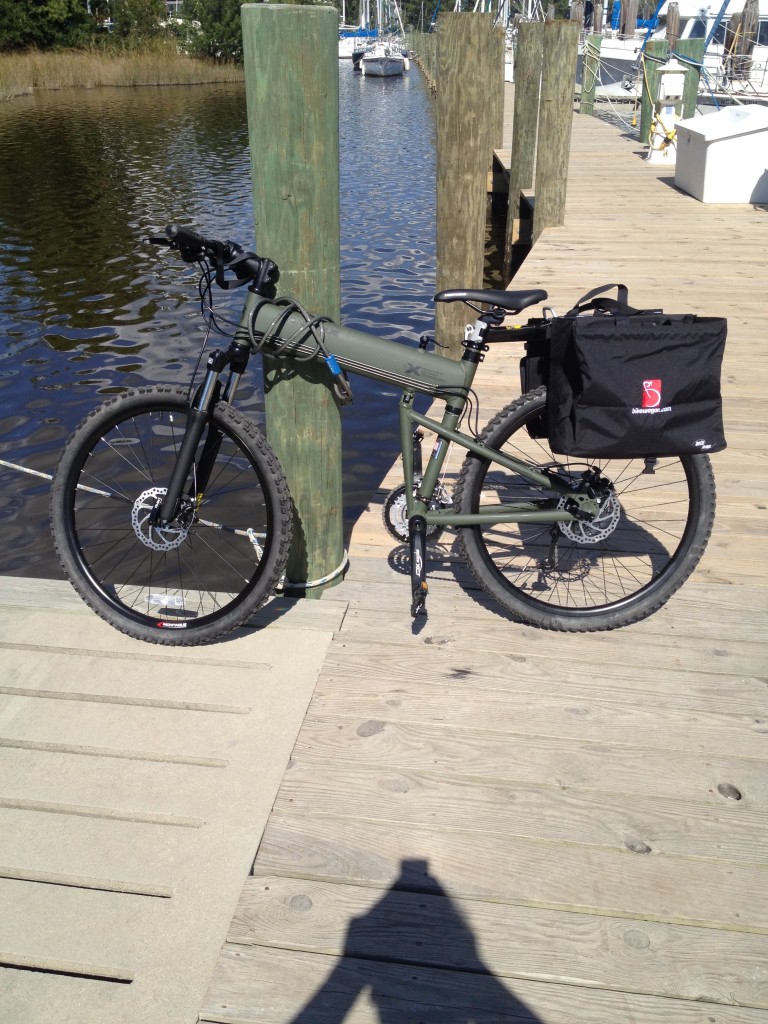
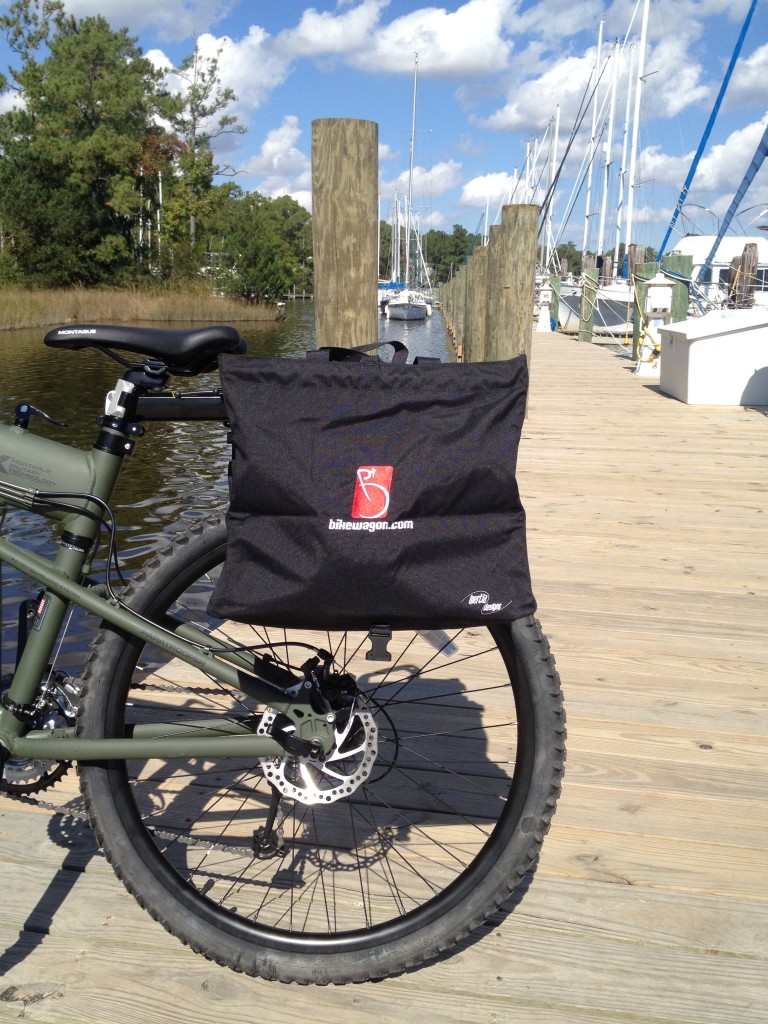
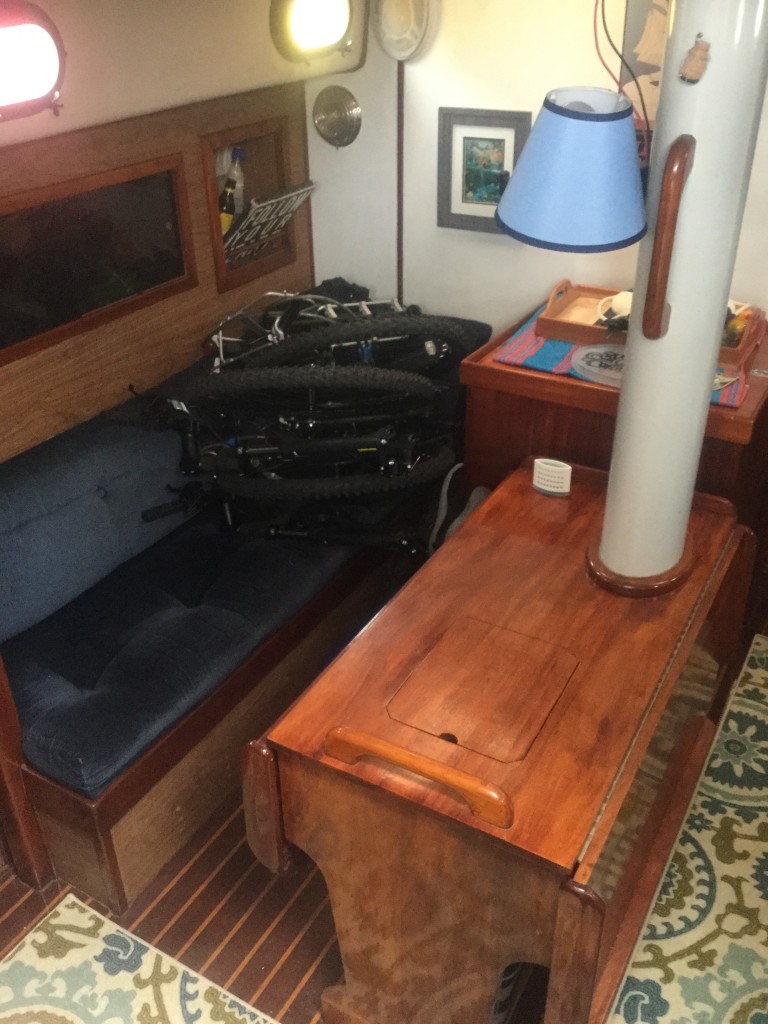





 Aaron Carmona and his traveling pooch (photo credit to Towne Dock)
Aaron Carmona and his traveling pooch (photo credit to Towne Dock)


